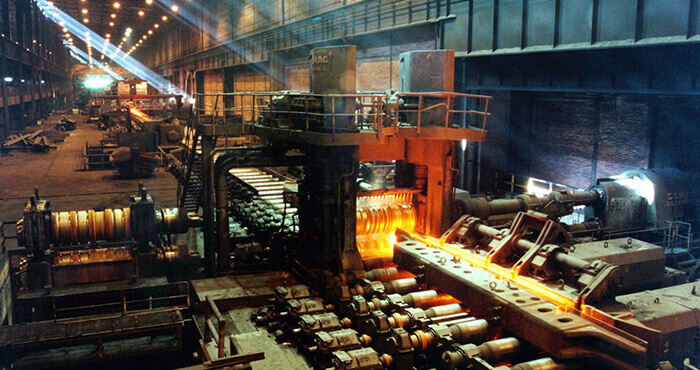Specialty Chemicals Market in India

Specialty Chemicals Market in India
Global Specialty Chemicals market size is pegged at ~$805 bn and is expected to reach $1.2 tn by 2025 (a 6.4% CAGR). Globally, ~25% of the total specialty chemicals production is exported, totaling to ~$200 bn.
Previously, the European Union (EU) and United States (US) were the key chemical hubs globally. Together they contributed to almost 40% of global chemical sales till 2006. However, the 2008 global crisis changed everything.
Developing countries started performing better than the relatively mature Western economies. Over the last ten years, the base of the chemical industry has moved from the developed Western region to emerging Asia, with China being the key beneficiary, followed by India. Asian manufacturers enjoy low labour costs, relatively relaxed environmental norms and government subsidies.
Specialty chemicals stocks have greatly outperformed all the leading indices over the last twelve months. This was primarily driven by future growth potential, strong domestic consumption led by a young population, import substitution, and government impetus including the Make in India program. Rising middle-class and rapid urbanisation are driving the demand for personal care, agrochemicals, food, paints & coatings, and other end markets.
According to IBEF report, globally, India is the 3rd-largest consumer of polymers, 4th-largest producer of agrochemicals and 6th-largest producer of chemicals. However, the Indian Domestic Specialty Chemicals industry, grew at double the global CAGR (~12%) over 2015-20, is valued at ~$32 bn.
Looking ahead, the Indian Specialty Chemicals industry is expected to reach $64 bn by 2025, representing a CAGR of 12.4%. Along with the other factors mentioned above, lower cost structure than China and Vietnam are also expected to drive the growth of this sector. This gain would be driven by a healthy demand growth (CAGR of 10-20%) in the export/end-user industries.
However, China has rapidly scaled up its operations by creating petrochemical hubs across the country to meet the global demand for specialty chemical products. Under India’s new Petroleum, Chemicals and Petrochemicals Investment Region (PCPIR) Policy 2020-35, it has been targeted to attract a combined investment of Rs 10 lakh crore by the year 2025, Rs 15 lakh crore by 2030 and Rs 20 lakh crore by 2035 in all the PCPIRs across the country to further boost demand for specialty chemicals.
Now, let us have a more detailed look at the factors driving the growth in the Indian Specialty Chemicals sector.
1) Alternatives to China:
China dominates the global Specialty Chemicals space with a ~35% market share, with exports worth $35 bn in 2019 (i.e., ~4.0x that of India). However, this growth has come at a significant environmental cost. Investments in protection of the environment have failed to keep up with the rapid advancement in the economy. Let’s look at certain events that highlighted the environmental issues in China.
- In 2011, the US embassy in Beijing revealed data that the PM2.5 concentration was beyond the levels specified by the United States Environmental Protection Agency (US EPA)’s Air Quality Index. This raised several national and international public safety concerns li
- In 2016, the Chinese government issued a development plan for the Yangtze River Delta Economic Belt, where pollution had reached dangerous levels. No factories are now allowed within 1km of the river
- There was a huge explosion in the industrial area of Yancheng in Mar 2019. The Chinese government conducted heightened safety inspections at all chemical companies, which disrupted the supply of raw materials in the Chemicals space, resulting in the prices of certain specialty chemicals shooting up
China has recently been issuing different environmental protection norms and is taking the required steps to secure a sustainable environment.
Additionally, in 2018, the US announced the imposition of tariffs on Chinese imports. This not only impacted the pricing of goods but also capital spending by chemical majors. The US–China trade war resulted in supply uncertainties in western countries.
Due to the above factors, the demand for chemicals has shifted from China to other Asian countries, with India leading the pack.
2) Government Support:
The Indian government has introduced a Production Linked Incentive (PLI) scheme for manufacturing to make India part of global supply chain. The government intends to spend ~$20 bn to –
- build an efficient and globally competitive domestic manufacturing base
- enable economies of scale and exports
- attract investments in core sectors
- introduce cutting-edge technologies
In Union Budget 2021-22, the government allocated INR 233 crores ($32 mn) to the Department of Chemicals and Petrochemicals. The Production-linked Incentive (PLI) plan for the National Programme on Advanced Chemistry Cell Battery Storage has been approved by the Union Cabinet as of May 2021.
Other favourable initiatives by government:
- A vision is set up for 2034 for the the chemicals and petrochemicals sector by the government. This aims to explore opportunities to improve domestic production, reduce imports and attract investments in the sector
- 100% FDI is allowed in the chemical sector under automatic route with exception to few hazardous chemicals
- Industrial licensing is approved in most sectors, except for few hazardous chemicals
- Reduced the basic customs duty on several products
3) Research and Development
Specialty Chemicals space has high entry barriers – given the complex nature of chemistries involved in producing these chemicals. Considerable R&D requirements, technical know-how, service capabilities, customer relationships, and compliance with required regulations create significant entry barriers.
Along with R&D investments, other barriers to entry include customized solutions/applications and long-term customer relationships. Switching costs for specialty chemical customers are high. As a result, they are reluctant to switch existing products for marginal gains – as specialty chemicals account for just a small proportion of the final product cost.
India’s public investment in R&D stands at 0.7% of GDP, which the government plans to increase to ~2% by 2025. Moreover, the Specialty Chemicals industry is expected to double its R&D spend to about 5 to 6% of revenues over this period.
To conclude, India is emerging as a key exporter as global players are reducing their dependence and outsourcing from China. This would help India increase its exports and capture incremental market share globally. The country is set to become the fourth largest chemical producer (from sixth currently) in the world in the current decade.
The Specialty Chemicals industry caters to a wide range of end-user markets like pharmaceuticals, automobiles and tyres, steel, dyes and pigments, packaging, flavors and fragrances, textiles, etc. Growth in end-user industries would drive growth of the Specialty Chemicals sector and take it to new heights.
Related Posts

E-GROCERY IN INDIA
JUL 26, 2021 IN INDUSTRY ANALYSIS
Over the last decade, the Indian food and grocery market has been growing at over 10+% year over year driven by GDP growth, population growth, growth in average disposable income etc. However, the most critical factor for such a growth is the integration of technology. As per various estimates, the online grocery market has grown at 25x to 30x and reached the $3 billion mark. Nationwide lockdowns have added the fuel to the growth with surge in app visits & daily orders of e-Grocers.

UNDERSTANDING THE STEEL RALLY
JUL 29, 2021 IN INDUSTRY ANALYSIS
A sector which has remained in the limelight for the last 12 months, for good reasons, is Indian steel sector. Share prices of the leaders – Steel Authority of India and Tata Steel are up over 250% in the last 12 months. So, let’s understand why.

INDIAN EQUITIES
JUL 29, 2021 IN EQUITY MARKET
When it comes to Indian equity markets, our eyes focus on two benchmark indices. With Nifty 50 Index around 15,700 and BSE Sensex around 52,000, there was another milestone, which we hit – that is linked to market capitalization.